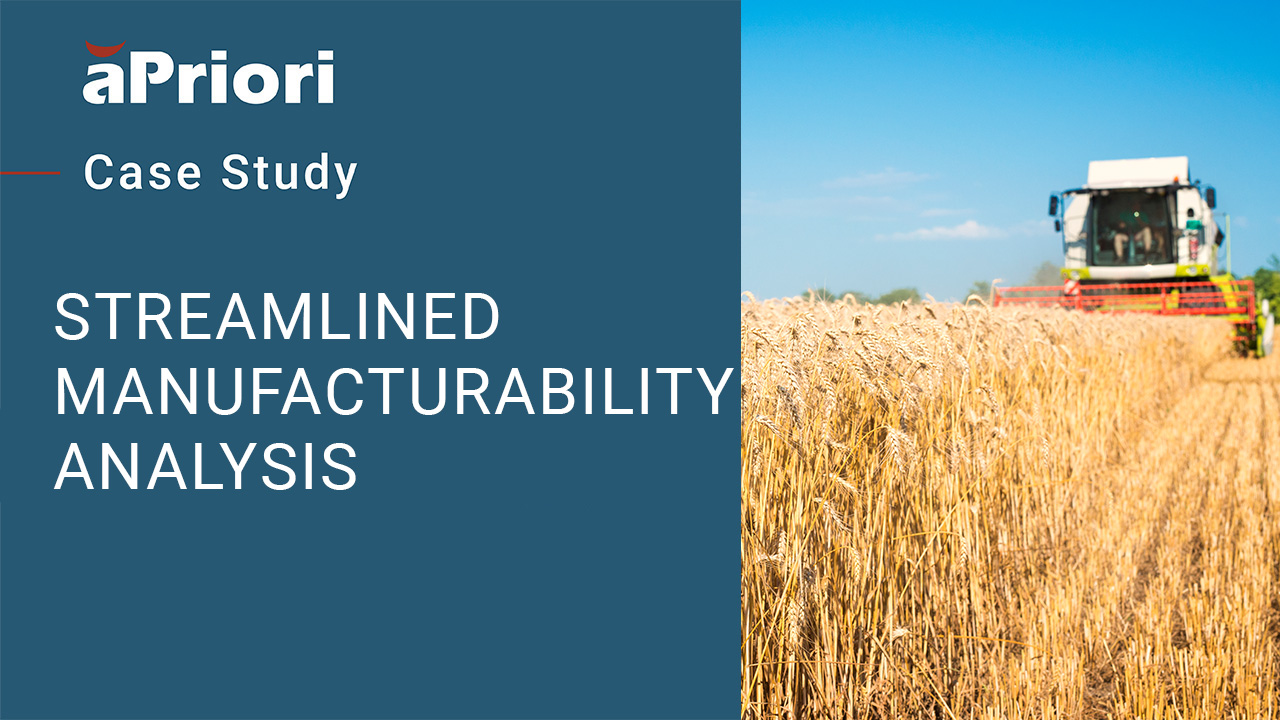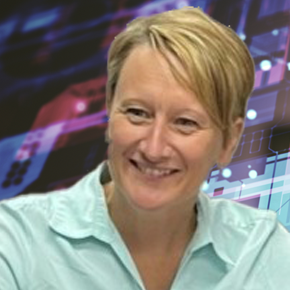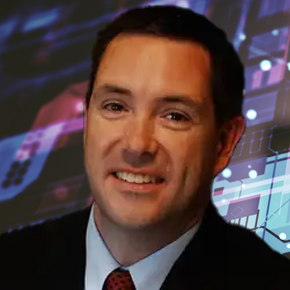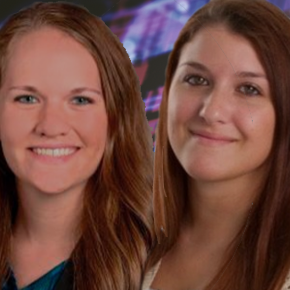March 30, 2023
Technology for Sustainable Agriculture
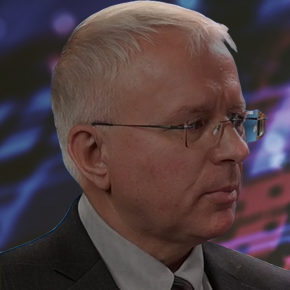
Transcript
The Impact of New Technologies on Sustainable Agriculture
Agriculture is a microcosm for innovation in manufacturing — and it’s changing faster than climate change. Sustainability initiatives and technological innovation continue to revolutionize the business of agriculture — from robot-driven tractors to artificial intelligence, to digital solutions like aPriori that allow companies to harvest cost savings that add up to millions of dollars.
To talk about what new technology means for manufacturing as a whole, I spoke with Sam Freesmeyer, former VP of Engineering at AGCO and a pioneer in leveraging digital technologies to drive efficiency in product development. I caught up with Sam Freesmeyer at aPriori’s 10th Annual Insights Conference, where we talked about the challenges of breaking down silos (the bad kind) and how companies can plow ahead when it comes to innovation.
Leah Archibald: Sam, you’ve been talking with executives across all different industries – what do you feel like is their biggest pain point at this moment?
Sam Freesmeyer: Equipment for agricultural production is what I know best, but what I’m learning from today’s discussions and other discussions I’ve had over the past couple of years is there are some problems that are common to every company, and one of those problems is the ability to develop new product and maintain current products across functional lines.
The Product Development Ecosystem
You’ve got your engineering people, your product management people, your manufacturing people, and your purchasing people, and they all have a part to play in the ecosystem. No one of them owns the whole solution, but they struggle to be able to work across those lines because of the unique accountabilities each function has for their own targets. Cost in one company is owned by engineering, so purchasing doesn’t engage. In another company, it’s purchasing and manufacturing doesn’t engage or engineering doesn’t engage. And so, what we’re looking for is tools to help collaborative effort across the entire ecosystem. One of the interesting things in the new aP Workspace product is it shows a lot of promise for that: the tool still links into the other tools you use, so you’ve got opportunities for each function to use it in the way that they’re comfortable with and yet come together and have discussion.
Leah Archibald: I think that’s what we’ve been hearing from each case study: that the challenge of siloing is not just the people are siloed in each of their departments, but their technology also tends to be siloed.
Sam Freesmeyer: Oh, yeah. In the case study I heard today, the design engineers have an engineering platform, and the manufacturing guys have a different platform, and each thinks the other’s is inferior.
Leah Archibald: And not for nothing, there are different versions of the truth going throughout the different systems. Each department has different versions of goals, different KPIs. So it takes management practices to align your teams together.
What COVID Taught Us About New Technologies
Sam Freesmeyer: You know, it’s been really kind of funny in the last few years. COVID has taught us a lot of new things. We’ve learned a lot about how to use tools to collaborate. I think it’s going to be interesting to see how that dynamic carries on. Now that we’re back together, now that we’re here face to face, how do we still use different collaboration tools to get the job done and not walk away from what we learned in the last three years?
Leah Archibald: Even though we are together and face to face, I think there are challenges that have not gone away. We still have the crisis of labor supply. There’s a crisis of renewable energy. There’s a crisis of materials costs. These are going to need similarly innovative solutions.
Sam Freesmeyer: Yes, I think COVID exposed something that we were all trying to pretend wasn’t happening, which is the changing demographics of our world. We’re seeing a huge number of the baby boomers generation coming into retirement and leaving the workforce. And the replacement value of future generations are smaller. So there aren’t as many people to work. We’ve known this. This is not news. But we’re really forced to face it in COVID because now we see what it looks like when you can’t get labor.
We have to solve this problem. Farming is a great case study for that. If you look at on-farm labor 70 years ago, three-fourths of our population was involved in farming. Now it’s less than two percent. So where do you find labor when we’ve forced all of our people into the cities because there’s no work for them on the farms? We’ve automated ourselves out of the need for labor on farms, and the runoff issue is that now we can’t find farmers. That’s not sustainable development.
Leah Archibald: You’re the expert in smart agriculture, so I imagine you’re using this example because the transition of labor out of the farming area has had a huge impact on agricultural technologies.
New Agricultural Technologies to Reduce Greenhouse Gas Emissions
Sam Freesmeyer: Yeah, absolutely. What we’ve seen in recent years is as more and more people have left farming, the equipment gets bigger and bigger and bigger because you have to make the few remaining laborers as efficient as you can. Well, what happens if you don’t need a farmer sitting on the equipment anymore? There’s a huge paradigm shift coming in agricultural technologies as we finally make the shift to full autonomy and robotics in the field. I think we’re going to see smaller machines to do sustainable farming. There’s a big change coming, and it’s driven by new technology. We have precision agriculture technology; it’s just not cost-effective and it’s not reliable enough yet to displace the way we’ve done things in the past. Cost is a huge issue. Innovation is a huge issue. We see some discussions today about electric vehicles to reduce greenhouse gas emissions. 12% of light-duty vehicles are now electrified. Well, what does that look like on a farm? Very, very different. You can’t electrify a 500-horsepower tractor. You can’t get a battery big enough. But when you take the farmer off the tractor, now you can make smaller machines with a reasonable opportunity for electrification. So, there’s a whole bunch of innovation coming in that space to reduce environmental impacts, but it requires control of cost. It requires much better control of our supply chain. And those are some of the things that aPriori is addressing.
Leah Archibald: And how does this apply to the average manufacturer? Say someone’s making parts to go to another OEM. Is it as important for those companies, even small companies to incorporate digital insights into their processes?
Sam Freesmeyer: Well, yes. In a word, yes. Which of the products that we have today can we live without? Would we like to not have air conditioners? Would we like to not have glass for our windows? Would we like to not have dishwashers? Would we like to not have televisions?
Leah Archibald: I would prefer to have all those things, if you asked me.
Sam Freesmeyer: We like these things, [laughter] and we don’t want to give them up.
Leah Archibald: How can a solution like aPriori help people react faster, or react less and be more strategic?
What Economists Say about Profitability in the Agriculture Industry
Sam Freesmeyer: A lot of it is around getting control of the uncontrollable. If you can’t control it, at least monitor it. Over the last years, we’ve had a tremendous amount of impact from programs like REACH and RoHS in emissions and climate. These are real needs that need to be reacted to. But in the agriculture industry, I can design a tractor that doesn’t address any of those, and it’ll still plant seeds and plow and do all the other things a tractor does. But societal needs are greater than just food security, right? So, we’ve got to address these other issues as well. If I don’t even know they’re there until the regulation hits and I’ve got a bunch of non-compliant equipment, I’m in trouble. So, the economists are right: as we start getting better visibility into the parts that make up our complex systems and products, we can start to project how it will affect our cost and profitability when the new requirements come.
Leah Archibald: And until you measure it, you can’t improve on it.
Sam Freesmeyer: There are two pieces here to manufacturing sustainability. One, we have to have the tool, and two, we have to have the willingness to put it into our companies.
Regulation helps. Regulation levels the field, because everybody has to do it. If one company wants to be sustainable but their competitors don’t, that’s non-competitive. And okay, you can advertise that you produce equipment that adds biodiversity, or contributes to soil health or reduces the needs for pesticides, but if that costs twice as much and there’s no reason anybody has to do it, they’re not going to do it.
Leah Archibald: So, there’s got to be the will to track the carbon footprint, and there’s got to be the will to improve on that information.
Sam Freesmeyer: The will, and the ability. aPriori gives you the ability, and maybe the will is driven by the requirement.
Regulations on Agricultural Producers
I look at diesel emissions. Diesel engines today produce 5% of the particulate and nitrous oxides that they produced 25 years ago. This is because of a regulation that said you have to do it. It increased the cost substantially, but when everybody does it, then the cost gets distributed across society. When everybody has to pay it, it just becomes a cost of buying a diesel engine. But now everybody’s driving clean diesel engines. And so when you drive a modern diesel engine through the street of any city in America, it will put out less particulate than it takes in. Agricultural producers will soon face the same sort of regulations.
Leah Archibald: What excites me is that whether companies are excited about reaching sustainability targets or they’re irritated by the need to reach sustainability targets, aPriori can still help them reach those targets. Whether the motivation is out of fear or out of pain or out of the desire to get a competitive advantage, the technology that aPriori is putting together now can help manufacturers create a baseline and start to track it.
Sam Freesmeyer: I’ll guarantee you that 90% plus are irritated when it starts. [laughter] That’s just how it is.
Leah Archibald: I’m not surprised.
Incentives for Cost Reduction
Sam Freesmeyer: But that’s the same with cost reduction. I designed a nice cost-effective part. But the engineer says: what do you mean you want me to go back and redesign it for a lower cost? I’ve got all this other work I need to do first. So, we’ve got to establish the priorities of how we do things. One of the ways to establish those priorities is to say, “oh, by the way, when you do that, you’re going to free up about another $15 million for investment in new fun toys that you want to create.”
You’ve got to put it all into the balanced perspective, Because nobody goes out and does cost reduction for fun. It’s not fun. But that doesn’t mean it doesn’t have to be. We put in place a team a couple of years ago, and we called it “product cost optimization” because we didn’t like the sound of cost savings. So, we call it product cost optimization.
Leah Archibald: That sounds better.
Sam Freesmeyer: Yeah. And we went out and we identified, $20-$30 million worth of savings that could be achieved. It’s kind of hard to say no to that. So, you just need to get the right approach so that everybody says, “hey, this is important to me.” Now, if I say I’m going to go out and establish this sustainability goal in terms of carbon reduction by the energy that I use or by the materials that I buy or by the way my product performs, how do I measure environmental impact in terms of something that matters? Well, if I improve my ESG scores, my stock price goes up. Or I get access to contracts I wouldn’t have access to. That you can measure in dollars. And most people can pay attention to that.
Leah Archibald: Thank you so much for sharing your insights with us today.
Sam Freesmeyer: You’re welcome.
